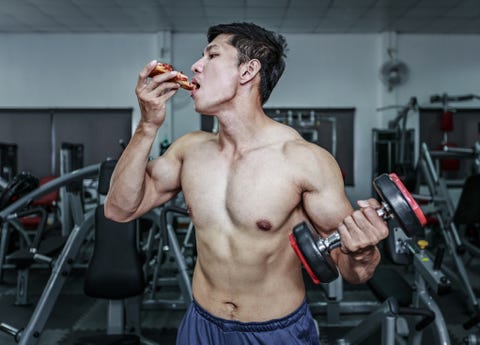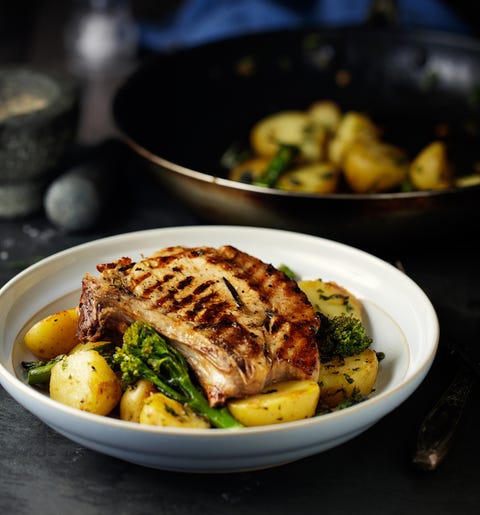How to Eat Better After Your Workouts
This story was originally published in the November 2016 issue of Men’s Health.
I’ll remember that milkshake forever. It was the summer of 2008, and my training partner and I were grinding through the soul-crushing dregs of a 100-plus-mile bike ride in preparation for Ironman Louisville.
We finished that ride at an ice cream shop where I proceeded to suck down a milkshake the size of my quads. I’m a dietitian, so this was like a radiologist chain-smoking a pack of Luckies. Yet those cold, liquid calories were satisfying my every need at that moment.
You’ve felt this feed-me-now urge. Many of my clients don’t know what true hunger is until they feel it after exercise. But then they fill up on nutrients they don’t need (like sugar from milkshakes) instead of ones they do. It’s difficult. Let’s look at how your brain, body, and stomach conspire to sabotage your training goals.
Why Am I So Ravenous?

TwilightShowGetty Images
Here’s the weird thing: Immediately after a workout, your brain doesn’t let you feel hungry. Researchers call this “anorexia of exercise.” This blunting of hunger can last for 30 minutes to four hours after a work-out, says Heather Leidy, Ph.D., a nutrition researcher at Purdue University. Exercise, she explains, increases your body’s heat production (a.k.a. metabolism), so blood is diverted from your gastrointestinal tract to other parts of your body that need it more.
Then what’s behind the post workout munchies? Two things: Some men feel compelled to eat because their brain motivates them to replenish the energy their body lost. This is called homeostatic eating. Other men eat for pleasure, or to manage their emotions. This is known as hedonic eating.
Being able to know the difference is the key to refueling in a way that assists your weight loss effort instead of undermining it.
How Not to Eat Like an Animal
Rule Number Duh: Unless you’re training for an Ironman, lay off the milkshakes.
It’s easy to fall into the “reward” trap of eating anything you want after a workout.You earned it, right? Well, most people over-estimate not only the intensity of their workouts but also the amount they should eat later. And although the heavier you are, the more calories you burn during exercise(as the graph below shows), you might out eat your exercise even if you’re overweight.
So level with yourself: Splurging on that burger, fries, and shake from a fast-food joint cancels out the calorie deficit you just created from working out.
How a Human Should Eat
After exercise, think of your body as a dry sponge. Intense activity sucked out the elements that allow your systems to do their jobs. Everything from your nervous system to your urinary system demands recalibration. So let’s break it down by nutrient.
Protein
Carbohydrates
Sodium
Potassium
Water
What to Eat After Your Workout

haoliangGetty Images
Here’s your post-workout menu: one palm-size serving of protein, one fist-size portion of carbs, and one piece of fruit or a handful of vegetables. Then just add water!
That meal could look like a pork chop, baked potato, and spinach salad, plus water. Follow these portion guidelines and you won’t have to go nuts counting calories.
If you can do this at a fast-food joint, that’s okay too: At Wendy’s, a grilled chicken salad with baked potato would be great. Just hold the fries and soda. What’s important is finding the strategy that best aligns with your hunger timeline. Otherwise, hedonic eating starts to slap around your drive for homeostatic eating—and it can get ugly.
You also want to know when to eat. Some guys still think they need to eat within an hour after exercise to maximize nutrient absorption, but there’s no reason to keep to that window. Hydrate as soon as you can, and let your stomach tell you when to eat.
And, sure, every once in a while, when you really deserve it, treat yourself to a massive, creamy milkshake.
Source: Read Full Article
